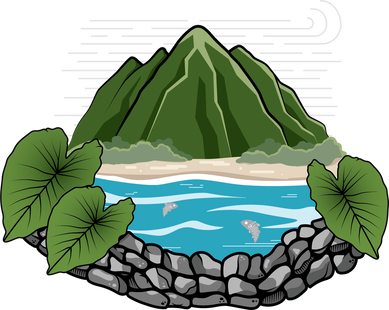|
As part of our mission, to cultivate community stewardship and restoration of cultural landscapes, Ka Ipu Makani began stewarding Kaupapa Loʻi o Kaʻamola a 1.6 acre parcel of loʻipunawai (spring-fed irrigated pondfield) in the ahupuaʻa of Kaʻamola on the southeast end of Molokaʻi. The loʻipunawai is an integral part of Kaʻamola's traditional kahakai (coastal) resource and production zone, emptying directly into Kainaohe - a 17.2 acre loko iʻa (fishpond). This nearshore ecosystem is unique in that it is the only functional loʻi to loko iʻa on the island of Molokaʻi. The Kāwao Kaʻamola program aims to restore and maintain this traditional biological resource zone, while reconnecting kānaka to the fragile, mauka-makai ecosystem of Molokaʻi.
|
The Kāwao Kaʻamola program is a collaborative effort between Ka Ipu Makani, the current property owners, the University of Hawaiʻi Maui College- Molokai Education Center, Alakaʻina Foundation- Molokaʻi Digital Bus, Sustainable Molokaʻi, and the Kamehameha Schools Kilohana Program on Molokaʻi. Ka Ipu Makani began stewarding this area in 2016 and has since cleared and maintained 830ft² of invasive vegetation, reopened traditional loʻi, opened up a new 132ft long ʻauwai system, and provided educational and service opportunities to 300+ community members. Ka Ipu Makani hosts community work days and educational groups to help with the restoration of this area. Please contact us for more information on how you can kōkua!
PHOTOS FROM
|
Photos from
|
photos from
|
PHOTOS FROM
|
"Kalo kanu o ka ʻāina. Natives of the land from generations back"
